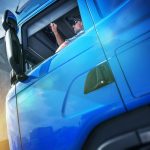What’s the Potential of In-Vehicle Infotainment Systems for Enhanced Passenger Experiences?
In the evolving world of automotive technology, in-vehicle infotainment systems are setting new benchmarks for passenger experiences. Riding in a car is no longer just about reaching a destination. It has transformed into an immersive journey powered by advanced technology. Infotainment systems are becoming a deciding factor for potential buyers, influencing their choice of vehicle. The systems offer a perfect blend of information, entertainment, and connectivity, significantly enhancing the overall driving and passenger experience.
The Growing Importance of Infotainment Systems in the Automotive Industry
Infotainment systems have brought a paradigm shift in the automotive industry. Increasingly, they are viewed as more than just an add-on feature in a car. They’ve become an integral part of the vehicle, improving the overall user experience, and playing a crucial role in the decision-making process for prospective car buyers.
Dans le meme genre : How Is Machine Learning Shaping the Future of Predictive Policing in the UK?
Infotainment systems are not only about playing music or movies anymore. They encompass a wide array of functionalities including navigation, real-time traffic updates, weather forecasts, personalized music and entertainment, smartphone integration, and even control functions for various vehicle settings. The systems are designed to meet the growing expectations of tech-savvy users who prioritize convenience, connectivity, and safety.
As automotive companies focus on developing innovative infotainment systems, they’re unlocking new market opportunities. According to market research, the global automotive infotainment market size was valued at USD 18.68 billion in 2022 and is expected to grow at a Compound Annual Growth Rate (CAGR) of 10.2% from 2022 to 2027. This growth is driven by the increasing demand for advanced passenger cars and the rising need for safety and security services that are facilitated by these systems.
Cela peut vous intéresser : Are Biodegradable Electronics the Future of Sustainable Consumer Tech?
Enhancing the Driver Experience
A high-quality infotainment system significantly enhances the driver experience. It provides drivers with the necessary information to make decisions that can improve safety, increase efficiency, and make the driving experience more enjoyable.
A key element of a modern infotainment system is the integration of smartphone technologies. This allows the driver to use familiar apps and services via the vehicle’s system, reducing distractions and making it easier to focus on driving. Additionally, voice-activated controls allow the driver to perform tasks such as adjusting the climate control or selecting a playlist without taking their hands off the wheel or their eyes off the road.
Data plays a crucial role in optimizing the driving experience. With real-time traffic data, drivers can adjust their routes to avoid congestion. Weather forecasts and road condition updates help drivers prepare for potentially difficult driving conditions. Also, some advanced infotainment systems can provide data on vehicle performance, enabling drivers to monitor their fuel efficiency and identify any potential issues before they become serious problems.
The Passenger Experience Revolution
While the focus is often on the driver, infotainment systems also have the potential to revolutionize the passenger experience. These systems can provide personalized entertainment, allowing passengers to watch movies, listen to their favorite music, or even catch up on their favorite TV shows during the journey.
For those who need to stay connected, infotainment systems provide internet connectivity, enabling passengers to browse the web, check their emails, or keep up with social media. Some systems even offer multiple-user functionality, meaning each passenger can engage with the system independently, using it for their own entertainment or information needs.
Infotainment systems also contribute to the overall comfort and convenience of the journey. Passengers can adjust their seat settings, control the climate in their area of the vehicle, and even order food or services to their destination, all through the infotainment system.
Ensuring Safety and Control
While infotainment systems offer numerous features for convenience and entertainment, safety and control are still paramount. Advanced systems are now equipped with features like hands-free calling, voice recognition, and steering wheel controls to ensure the driver can operate the system without causing distractions.
Many systems are also integrated with advanced driver assistance systems (ADAS), providing functionalities such as lane departure warnings, adaptive cruise control, and parking assistance. All these features contribute to a safer driving experience while enhancing the overall user experience.
The future of in-vehicle infotainment systems is promising, with further advancements expected in the areas of artificial intelligence, machine learning, and connectivity. As we continue to witness the rapid evolution of these systems, one thing is clear – the potential for improving passenger experiences is immense.
The combination of entertainment, information, and technology that in-vehicle infotainment systems offer is a game-changer for the automotive industry. They have shifted the focus from the mechanics of vehicles to the overall user experience, promising an exciting future for both the industry and its consumers.
The Future of In-Vehicle Infotainment Systems
In the not-so-distant future, in-vehicle infotainment systems will further evolve, becoming more sophisticated and tailored to individual needs. Advances in technologies such as artificial intelligence, machine learning, augmented reality, and voice recognition will open up new possibilities for customization and automation.
Artificial intelligence (AI) and machine learning can be used to learn drivers’ and passengers’ preferences, habits, and schedules, enabling the system to automatically adjust settings, select entertainment, and provide relevant information. For instance, an AI-powered system might learn that a driver usually stops for coffee on the way to work, and so could suggest nearby coffee shops or even place an order en route.
Voice recognition technology is expected to become more accurate and intuitive, allowing for seamless interaction with the system without the need for physical inputs. This could greatly enhance safety, as drivers won’t need to look away from the road or remove their hands from the wheel.
There’s also potential for augmented reality to be integrated into infotainment systems. This could provide a more immersive experience, for example, by overlaying navigation directions onto the windscreen, or displaying points of interest as the vehicle passes them.
Finally, as the trend towards autonomous vehicles continues, infotainment systems will play a key role in keeping passengers entertained and informed during their journey. With no need to focus on driving, passengers can fully immerse themselves in the rich, personalized experience that IVI systems provide.
Conclusion: The Unstoppable Rise of In-Vehicle Infotainment Systems
In conclusion, the potential of in-vehicle infotainment systems for enhancing passenger experiences is vast and ever-growing. From providing real-time traffic updates and personalized entertainment to enabling voice commands and ensuring safety, infotainment systems have truly revolutionized the way we travel.
The automotive industry has recognized the value of these systems, and they have become a key factor in consumers’ vehicle-buying decisions. The global infotainment market is set to grow at an impressive rate, driven by technological advancements and rising consumer expectations.
In the future, we can expect to see further integration of AI, machine learning, augmented reality, and advanced voice recognition technologies. These will provide even more personalized and engaging experiences for drivers and passengers, while also enhancing safety and control.
In the end, the in-vehicle infotainment system is not just about providing entertainment or information. It’s about creating a complete user experience that makes every journey enjoyable, convenient, and safe. And with the rapid advancements in technology, the potential of infotainment systems is only set to grow. The future of travel is here, and it’s powered by in-vehicle infotainment.











